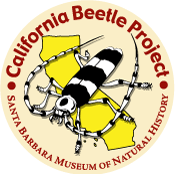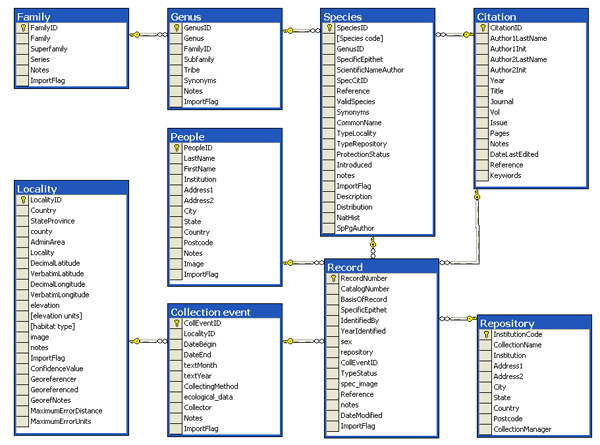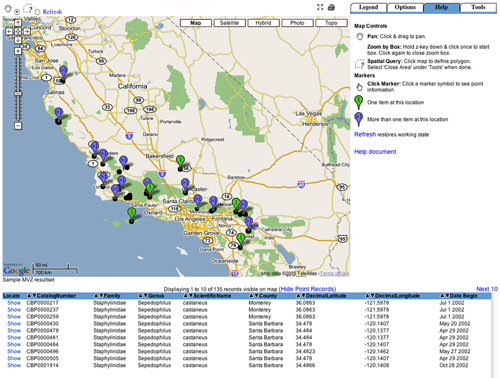|
|
|
|
| Collections and Research Online Databases - California Beetle Project |
|
NOTE: As of 2014, the California Beetle Project page is no longer updated. The original database and list of California beetles in the menu on the left will remain for the time being, but the information contained within is not necessarily current. SBMNH Entomology Curator Matthew L. Gimmel has divided up the function of the original database into two conceptual halves:
|
 • Home/Overview • Checklists • Database • Fieldwork • Phylogeography • Photo Gallery • Species pages • Endangered beetles • Personnel • Informatics • Collaborators • Collection • Bibliography • Support the project • Beetle links
|
California Beetle Project > Informatics
The California beetle database - Informatics This page contains information on the structure and function of the project database. This is the extremely brief version. More exhaustive documentation can be found in the pdf, CBPdbDocumentation.pdf. Purpose of the database The database is designed to house any type of occurrence data for California beetles, including vouchered specimen records, literature records, and authoritative sightings. The real innovation of the database is the accommodation of all of these kinds of data, as well as data from multiple collections. Structure of the database The primary project database is a custom Microsoft SQL Server database. It resides on a dedicated server at SBMNH with other Museum databases. Internally data are viewed, entered and edited primarily through a Microsoft Access interface. Microsoft SQL Server Enterprise Manager is also used for administrative tasks The database is relational, containing 9 separate tables, linked by key fields in each. The core table is the Record table, with specifics of each observation. Records in this table are linked through the CollectionEvent table to geographical data in the Locality table, and to taxonomic information in the Species, Genus and Family tables. Additional tables contain information on related People, Citations and Repositories. The figure below details these tables, the fields they contain, and the links between them. 
Web access Web query forms access a copy of the database residing on an publicly accessible server. This database is updated from the primary working database nightly. Data access pages make use of the Microsoft .NET framework. ASP.NET is software running on the server that interprets '.aspx' pages, sending queries to the database, and integrating the results within formatted html templates. The query pages make some use of C# (C-sharp) programming, and some Java scripts. Mapping For mapping georeferenced records, we make use of the BerkeleyMapper platform, developed by the Berkeley Natural History Museums consortium. Our database creates a file with the georeferenced records, which the BerkeleyMapper software then retrieves and interprets, plotting all records with Latitude and Longitude coordinates on an interactive map. The image below is a static example for the rove beetle Sepedophilus castaneus.  |